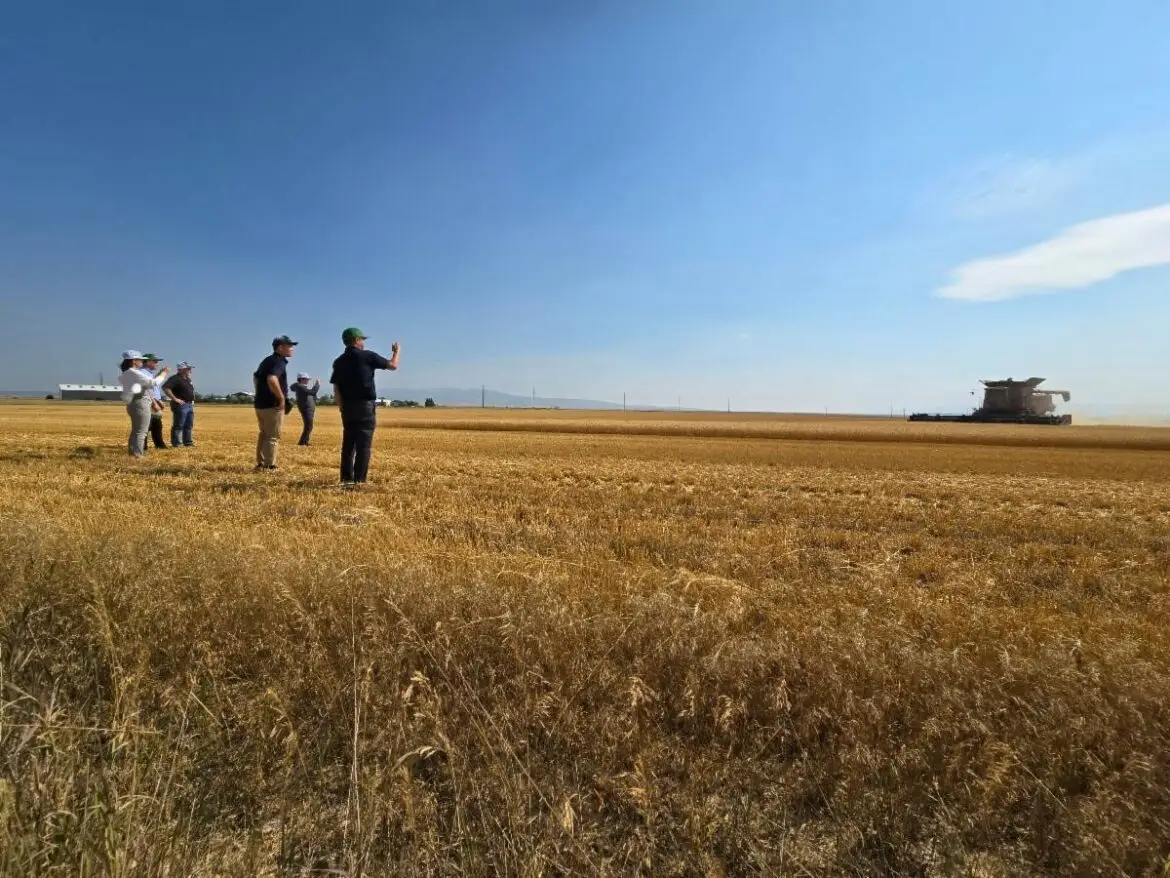While crop producers struggled to get anything cut during a shower-laced August, there’s some good news to report regarding productive trade team visits to Montana. Three Japanese trade teams arrived to gather in-depth information about Montana’s high quality wheat.
“Japan is one of our oldest international buyers and their interest in Montana wheat was a major incentive for launching the Montana Wheat & Barley Committee (MWBC) in 1967,” said Kent Kupfner, executive director, MWBC. “I think most producers know that Montana exports at least 75 percent of our wheat to the Pacific Rim. However, we can’t take that for granted. We know Canada and Australia have been very competitive in this market, so I think we [MWBC] can further educate producers about end use characteristics buyers are looking for. These August teams were a great example of their increasing focus on quality.”
US Wheat Associates brought to Montana members of the Japanese Flour Millers Association (JFMA), including four different companies focused on quality characteristics of this year’s crop. Nippn and SHOWA, the second and third largest Japanese millers respectively, Chiba Flour Milling and Okinawa Flour Milling spent two full days with us. These buyers were hyper focused on our spring and winter wheat crops with curiosity about protein content, kernel hardness and test weights. No doubt, they are thinking about how these qualities will impact their own milling process back home, along with marketability factors of the end product.
Nisshin, the largest flour milling company in Japan with 40 percent market share, brought four young professional team members August 10. Their roles included innovation and development, milling, quality control and production. Flour milling is the core of their business, but they emphasize “new food culture” with their Napoli pizza and tsukemen (dipping noodles). Nisshin has recently developed a food creation club online that helps the Japanese commercial industry create new markets with high fiber, whole wheat flour and bran. During their visit, they were fascinated with Mountain View Co-op’s grain handling and storage.
Beyond the lab, it’s our job to connect buyers to real-time industry on the ground while our guests are here. Because harvest has been so sporadic, we struggled to find anyone harvesting within an hour of Great Falls for the JFMA group to witness. We got lucky in Moore; each one of these millers was able to ride along in the cab with Paul Tyler – a big thrill! In addition to 2024 crop quality factors, we also concentrated our attention on fall planting – talking about seed selection, crop inputs, demonstrating equipment – and how fall moisture is retained through practices like no-till.
Reaching out to new markets is a big piece of the sales puzzle, but mature markets like Japan do not sit idle; they must be maintained and strengthened. For example, when our customers are working on new products, we need to hear about those innovations so we can promote the best varieties to fulfill their needs. If they admire our Montana family farm legacy, or perhaps how our producers utilize water, then those market advantages must be reinforced in every visit. As the saying goes, communication is key.
Most of these buyers were under 40 and very adept at technology, some taking notes by electronic pen and tablet. Like Americans, they have less contact and exposure to production agriculture as generations change. These visits give them a first-hand experience; in turn we hope that emotional impact drives demand and enhances our trading relationships for Montana’s grain industry.
###
Montana Wheat & Barley Committee


